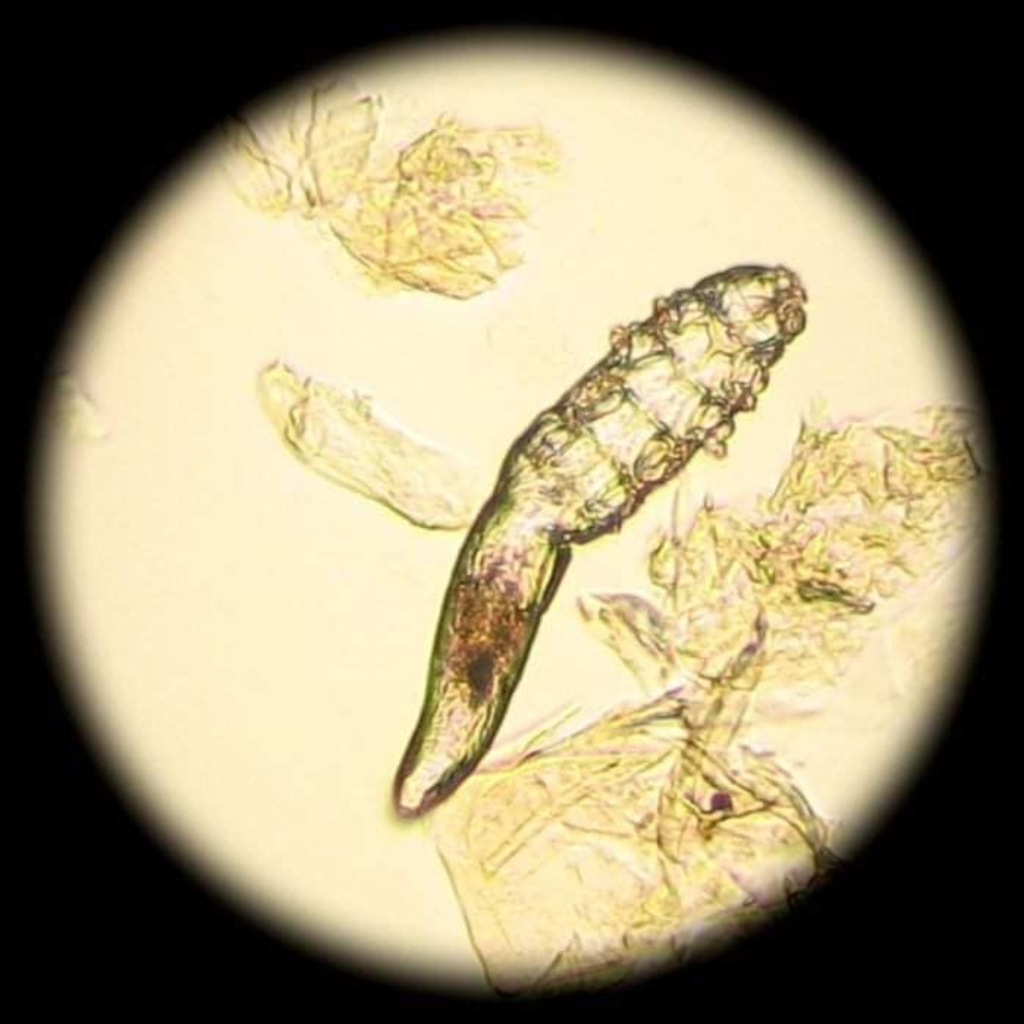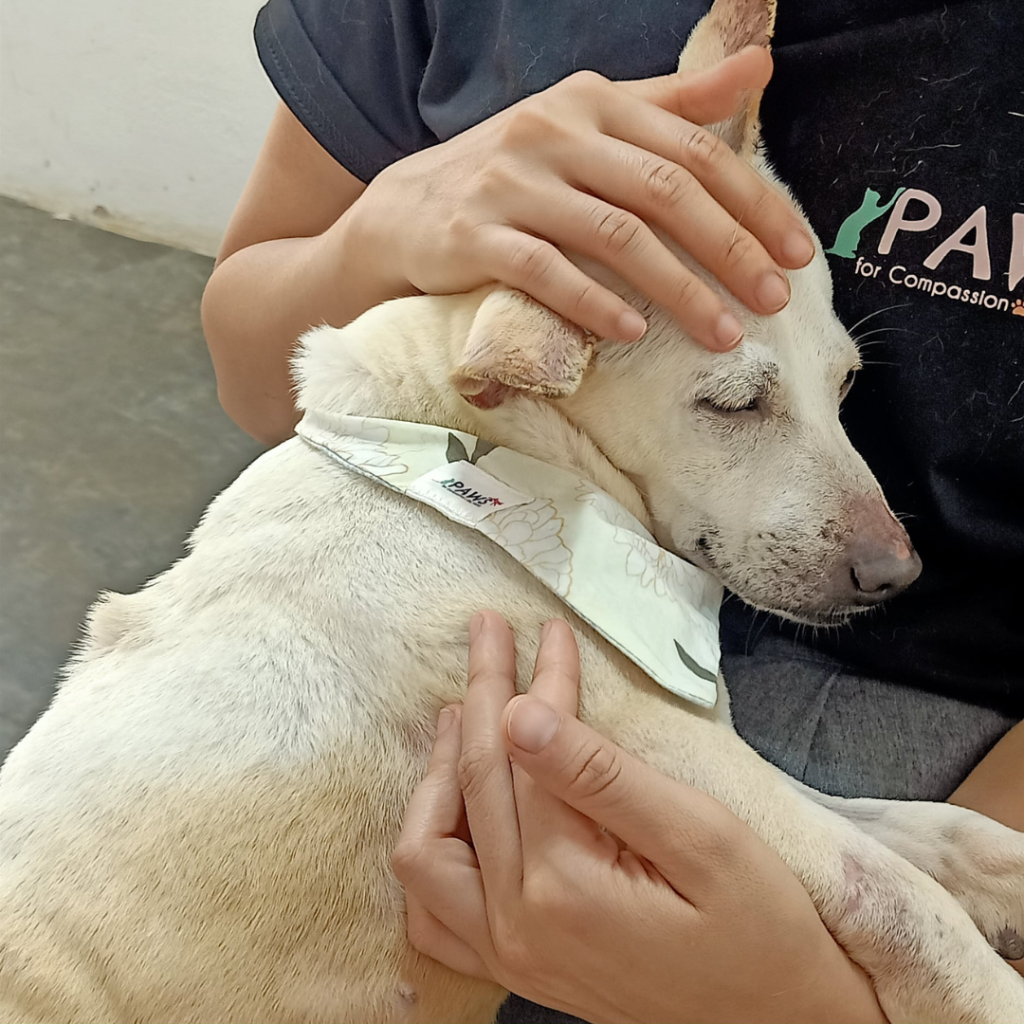A second chance in life:
Meet our latest rescue, Billie!
Our outreach team first spotted Billie in February. This little puppy was tied up outside her house day and night, at only 2 months old! Our outreach team tried to speak to the owners to improve her living conditions but she suddenly disappeared after Têt. We were worried about what could have happened to her and feared the worst.
Two weeks ago, she reappeared in the same location, not tied to a tree but cramped in a small cage. A concerned neighbor contacted us after hearing her crying at night and seeing her terrified by a rat that had gotten into her cage. Our outreach team decided to act right away before she disappeared again.
Poor Billie looked so bad that we weren’t even sure it was the same puppy we had met 2 months earlier. Her whole body was covered in rashes and wounds. After a brief chat with her owner, we understood that he did care for her but didn’t know how to look after her properly. He explained that he had tried to treat her skin but to no avail. He quickly agreed to let us take her, and Billie went straight into the care of one of our experienced foster families.





Despite this difficult start to life, Billie is the sweetest, most playful little girl. She loves people and is friendly with other dogs. A visit to our clinic revealed that she not only had mange but also tick fever! We can’t explain how pleased we are that we were able to act quickly and start treating her before she developed more aggressive symptoms.
Become Billie’s monthly sponsor here, and other neglected pups, just like her, and help us cover the vet bills for only $25 a month!
What are mange and tick fever?
Homeless and neglected dogs are the most vulnerable to a whole range of diseases, many of which are highly contagious, spread rapidly, and can be fatal if left untreated.
Mange is one of the most common skin diseases we see in those dogs. In some extreme cases, the dog will appear hairless with the skin covered in sores and crusty patches. This infection caused by mites is very uncomfortable and painful but can also be easily treated.
Other common diseases observed in stray dogs are tick-borne diseases. This group of diseases is transmitted when an infected tick bites the dog. Left untreated, it can lead to severe complications such as anemia, and bleeding disorders, and become potentially life-threatening. Tick fever can be prevented in dogs by using tick preventatives, such as spot treatments or oral medication, and by regularly checking your dog for ticks after outdoor activities.






